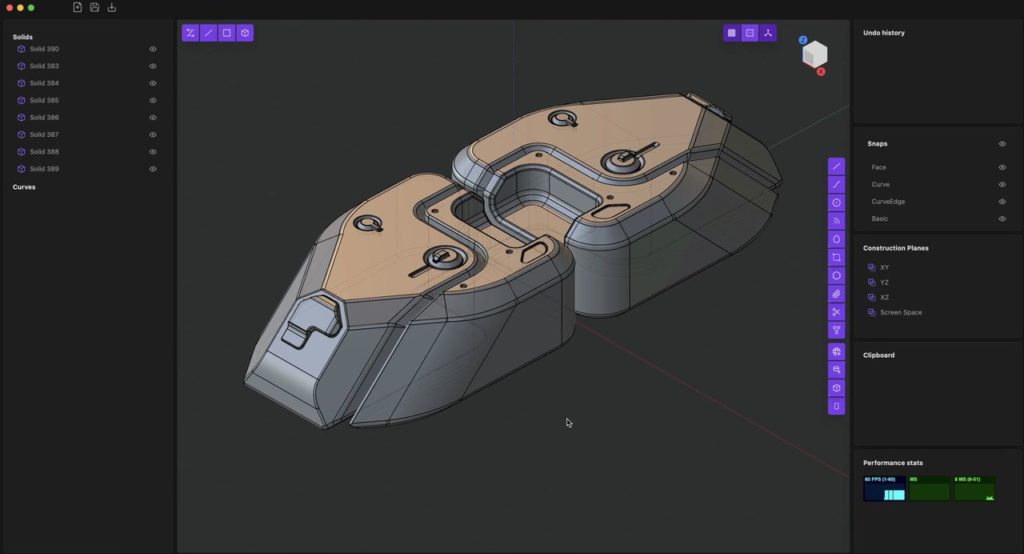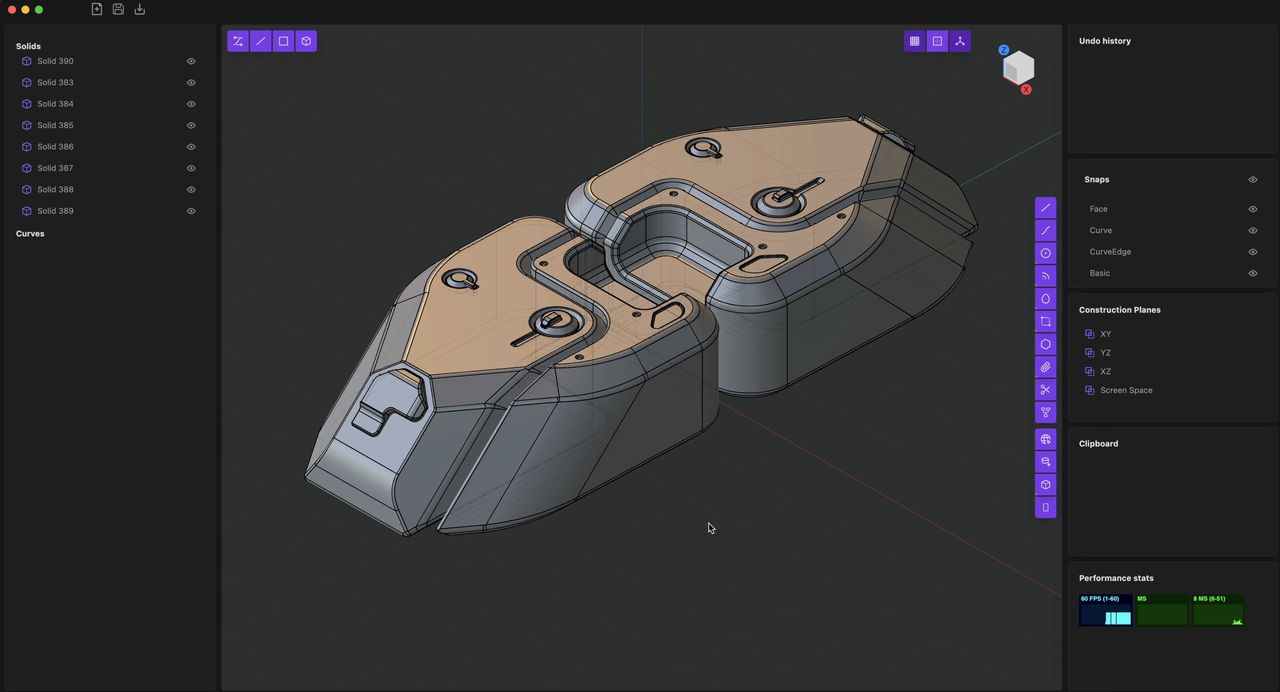
A new, inexpensive 3D modeling tool is about to arrive: Plasticity.
There are plenty of 3D modeling tools available, and they all have different forms, target markets, pricing and advantages. They can range from simple block-based tools for children, to ultra-expensive team CAD tools for product designers, to open source tools in a variety of areas.
Plasticity seems to be targeting the mid-to-low complexity mechanical parts design space for concept artists and product designers.
It is based on “NURBS”, which stands for “non-uniform rational b-spline”. Essentially it creates 3D geometry through the use of mathematically defined curves. This approach is also used by the popular Rhino 3D system.
NURBS allows designers to create smooth and beautiful curves that can be extruded, spun or otherwise mapped into fresh 3D shapes.
The system, built by Nick Kallen, who explains the system:
“Plasticity is a 3D modelling software for concept artists. Modelling in Plasticity is quick and efficient due to the unique gizmos, shortcuts, and thoughtful workflow.
The goal of plasticity is to make working with NURBS like working with clay.”
Here’s a short video showing the possibilities with Plasticity:
The interface seems quite clean and easy to use, although there will be a learning curve, like all 3D modeling tools. It seems pretty straightforward to create terrific — and 3D printable — objects. Complex objects seem quite achievable with Plasticity.
Plasticity is still in BETA, meaning it’s definitely not ready for release, and is seeking testers to identify bugs for repair.
It’s available for download at GitHub, where you can obtain a pre-release version (available for Windows and Mac OS). As of this writing, the software is at version 0.5.34, but there seems to be updates happening each day, and sometimes multiple per day.
Since Plasticity is hosted on GitHub, you’d assume that it is open source software.
But you’d be wrong. Plasticity is intended to be a commercial product, but one that makes some use of open source code, as do many commercial products. It turns out that there is proprietary software involved in Plasticity. Kallen explains:
“Plasticity is COMMERCIAL SOFTWARE. It will cost money to buy when it reaches 1.0.
The code in this repository is licensed under the LGPL. To goal is to allow users to inspect the source and (in the future) allow users to make their own modifications and/or develop plugins.
HOWEVER, it dynamically links with a commercial software software that I have licensed for $$$$$$$$. That license imposes many restrictions on how the app can be distributed and what functionality is available to end users. Please do not redistribute the binary.”
If you’re interested in testing out a brand new 3D modeling tool, I encourage you to head to GitHub and download a release to test.
Via GitHub and Plasticity

